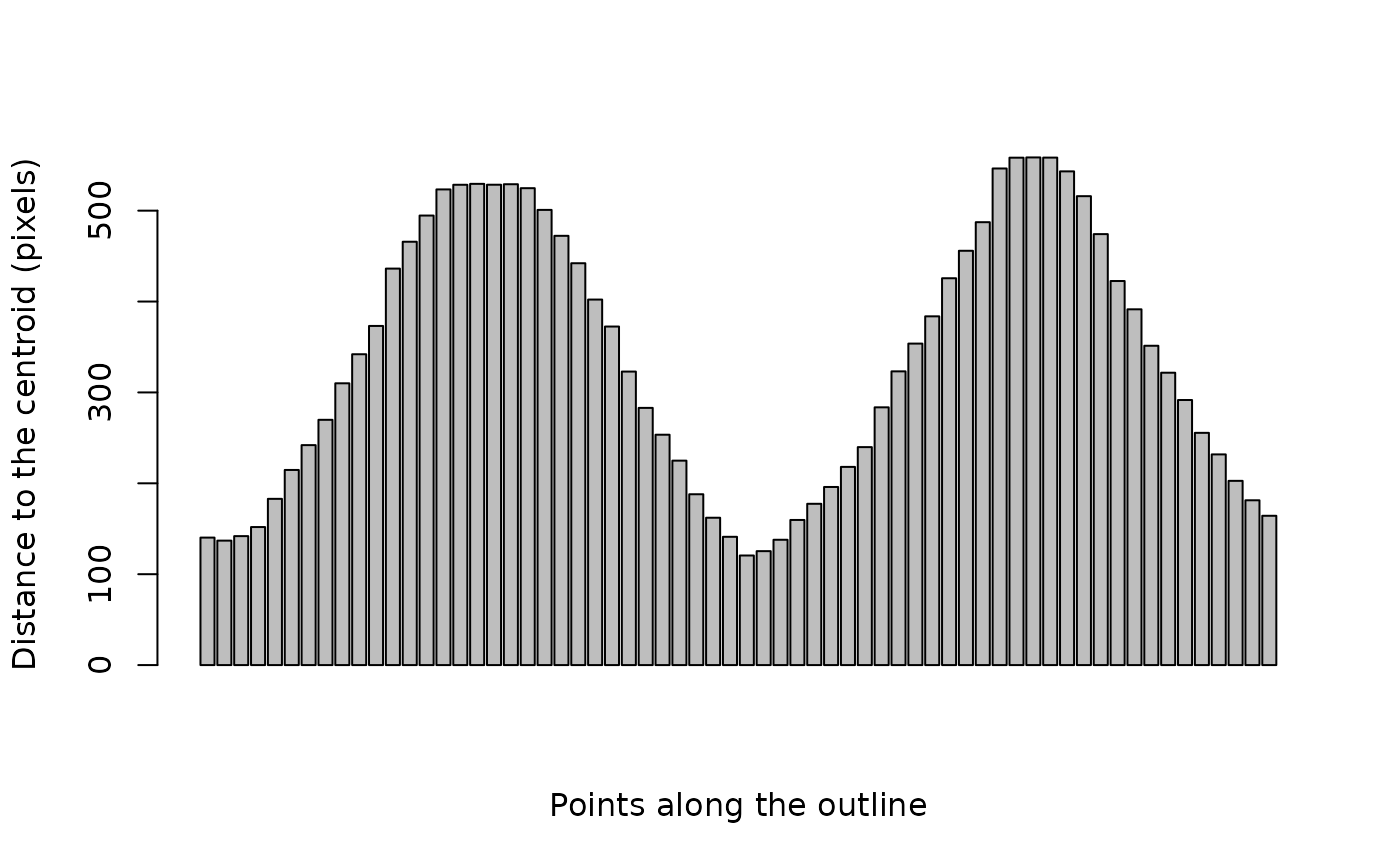For every point of the shape, returns the (centroid-points) distance.
See also
Other centroid functions:
coo_centpos(),
coo_centsize()
Other coo_ utilities:
coo_aligncalliper(),
coo_alignminradius(),
coo_alignxax(),
coo_align(),
coo_baseline(),
coo_bookstein(),
coo_boundingbox(),
coo_calliper(),
coo_center(),
coo_centpos(),
coo_close(),
coo_down(),
coo_dxy(),
coo_extract(),
coo_flipx(),
coo_force2close(),
coo_interpolate(),
coo_is_closed(),
coo_jitter(),
coo_left(),
coo_likely_clockwise(),
coo_nb(),
coo_perim(),
coo_range(),
coo_rev(),
coo_right(),
coo_rotatecenter(),
coo_rotate(),
coo_sample_prop(),
coo_samplerr(),
coo_sample(),
coo_scale(),
coo_shearx(),
coo_slice(),
coo_slidedirection(),
coo_slidegap(),
coo_slide(),
coo_smoothcurve(),
coo_smooth(),
coo_template(),
coo_trans(),
coo_trimbottom(),
coo_trimtop(),
coo_trim(),
coo_untiltx(),
coo_up(),
is_equallyspacedradii()
Examples
b <- coo_sample(bot[1], 64)
d <- coo_centdist(b)
barplot(d, xlab="Points along the outline", ylab="Distance to the centroid (pixels)")
